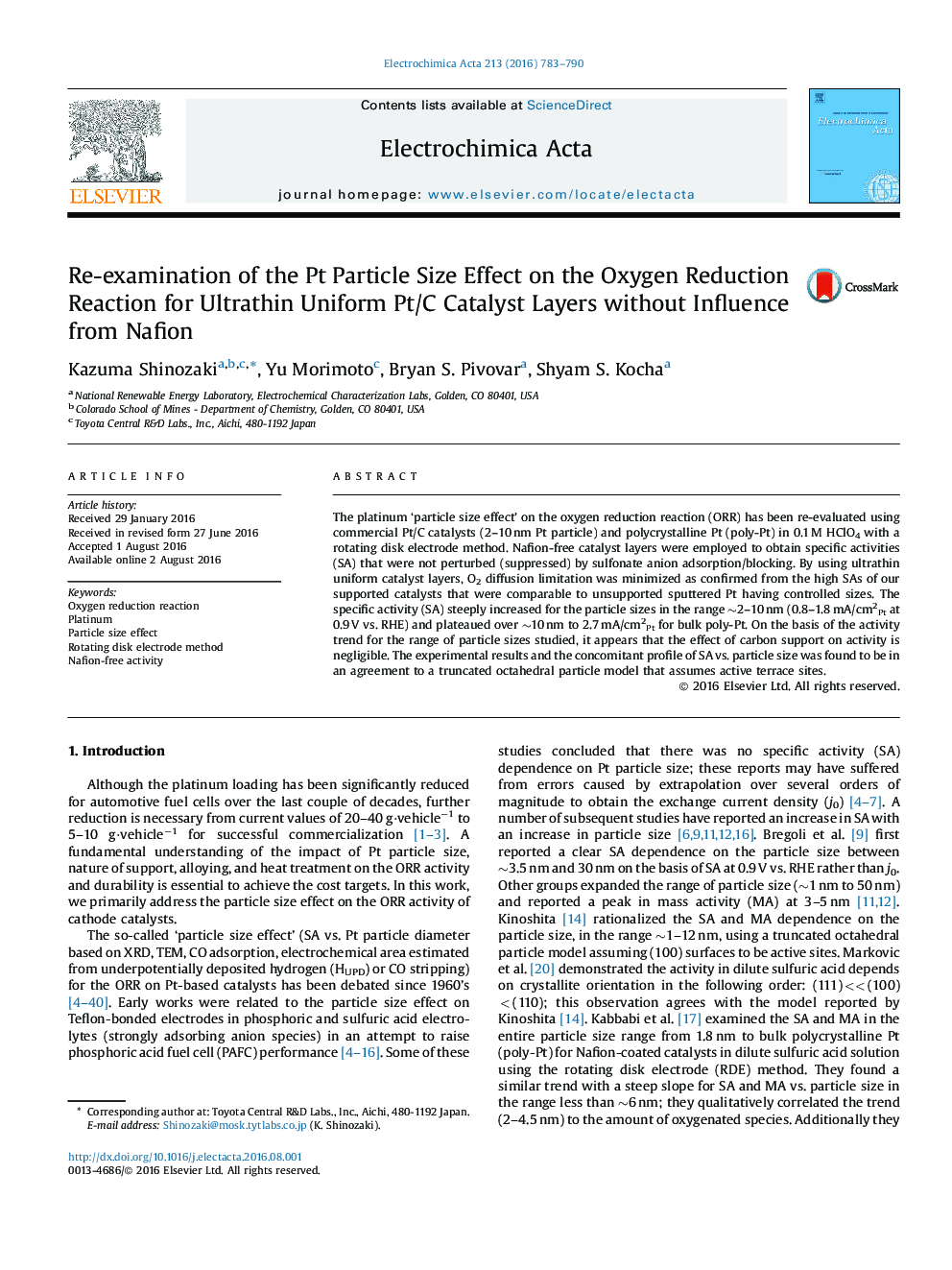| Article ID | Journal | Published Year | Pages | File Type |
|---|---|---|---|---|
| 6605986 | Electrochimica Acta | 2016 | 8 Pages |
Abstract
The platinum 'particle size effect' on the oxygen reduction reaction (ORR) has been re-evaluated using commercial Pt/C catalysts (2-10Â nm Pt particle) and polycrystalline Pt (poly-Pt) in 0.1Â M HClO4 with a rotating disk electrode method. Nafion-free catalyst layers were employed to obtain specific activities (SA) that were not perturbed (suppressed) by sulfonate anion adsorption/blocking. By using ultrathin uniform catalyst layers, O2 diffusion limitation was minimized as confirmed from the high SAs of our supported catalysts that were comparable to unsupported sputtered Pt having controlled sizes. The specific activity (SA) steeply increased for the particle sizes in the range â¼2-10Â nm (0.8-1.8Â mA/cm2Pt at 0.9Â V vs. RHE) and plateaued over â¼10Â nm to 2.7Â mA/cm2Pt for bulk poly-Pt. On the basis of the activity trend for the range of particle sizes studied, it appears that the effect of carbon support on activity is negligible. The experimental results and the concomitant profile of SA vs. particle size was found to be in an agreement to a truncated octahedral particle model that assumes active terrace sites.
Related Topics
Physical Sciences and Engineering
Chemical Engineering
Chemical Engineering (General)
Authors
Kazuma Shinozaki, Yu Morimoto, Bryan S. Pivovar, Shyam S. Kocha,
